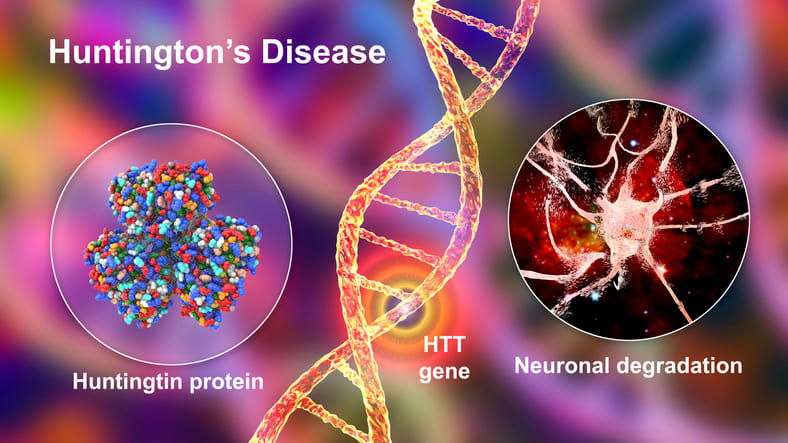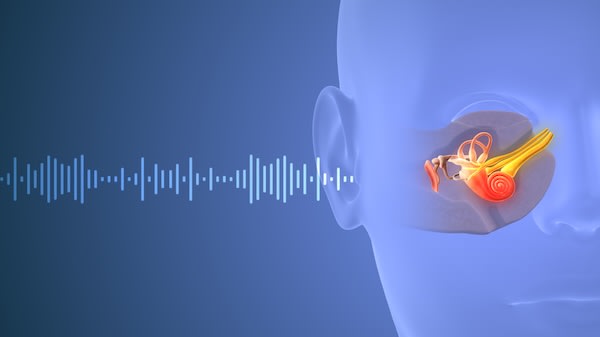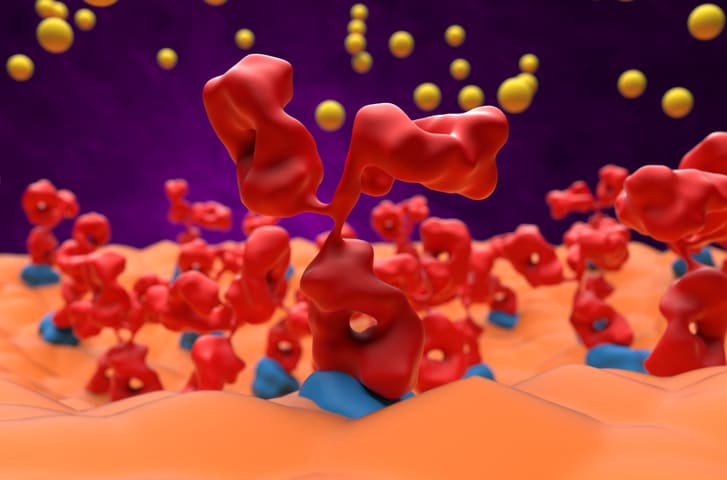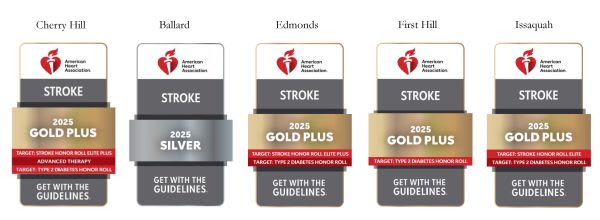Stroke: Symptoms, risk and other tips from a Swedish expert
[7 MIN READ]
In this article:
-
A stroke is a serious medical event that occurs when the blood flow to your brain is blocked, depriving it of essential nutrients and oxygen.
-
Having a stroke increases the chances you’ll have another, which can have significant consequences for your health and quality of life.
-
For American Stroke Month in May, the director of the Comprehensive Stroke Program at Swedish answers common questions and offers strategies to reduce your risk.
Who’s at risk for stroke? “Essentially everybody,” says Yince Loh, M.D., director of the Comprehensive Stroke Program at the Swedish Neuroscience Institute.
Someone in the United States has a stroke every 40 seconds, according to the Centers for Disease Control and Prevention. For one in four of them, it’s not the first time that’s happened, since having one stroke increases the chances you’ll have another. And the health consequences can be significant.
Stroke is a leading cause of serious long-term disability and death in the United States. It is more common in people 65 and older, but anyone can be at risk.
May is American Stroke Month. The annual event focuses on raising awareness and spreading the word about strokes and their impact on your health. We talked to Dr. Loh to get answers to some of the most common questions about stroke. Here’s what he shared.
What is a stroke?
“A stroke happens when there is not enough blood flow to part of your brain,” says Dr. Loh. “Brain cells can’t survive if they don’t get enough of the oxygen and nutrients they need from your blood. This can result in brain damage, serious disability or even death.”
There are two types of strokes:
- Ischemic stroke occurs when a blood clot blocks a blood vessel in your brain. It is the most common type, causing about 80% of all strokes.
- Hemorrhagic stroke occurs when a blood vessel ruptures and bleeds into your brain.
What are the signs of a stroke?
“Knowing the warning signs of stroke and taking immediate action when they occur can often make a life-changing difference. You may only have minutes before you have an irreversible problem,” says Dr. Loh.
The acronym BE FAST can help you know when it’s time to get help:
Balance – Loss of balance or coordination
Eyes – Blurred or loss of vision
Face – One side of the face is drooping
Arms – One arm is numb or weak
Speech – Difficulty speaking clearly
Time – Call 9-1-1 immediately
Who is at risk of stroke?
“Anyone could potentially be at risk of having a stroke,” says Dr. Loh. “It is more common in older people, but young people must also be aware of the warning signs. Anyone can have tears in their artery or their heart. Or maybe they have an abnormal heart condition they’re not aware of. Early detection of serious health issues is one of the reasons regular checkups are so important.”
Certain risk factors may increase your chances of having a stroke, including:
- High blood pressure
- Diabetes
- Heart disease
- Smoking
- Heavy alcohol consumption
- Inactive or sedentary lifestyle
- Personal or family history of stroke or trans ischemic attack (TIA)
How can I reduce my risk?
Prevention starts with regular visits with your primary care physician, according to Dr. Loh.
“Stroke risks, unlike other diseases such as high blood pressure or high cholesterol, can go on for years and years and years before they actually result in a problem,” he explains. “With regular checkups, you can screen for these conditions, identify them and then start treatment if needed. For instance, if you have unchecked high blood pressure or high cholesterol and don’t do anything about it, it can accelerate atherosclerosis and plaque buildup. Whereas, if you’ve got some buildup, but then you start those medicines, you may arrest the progression of that narrowing.”
Making healthy lifestyle choices is another successful strategy for lowering your stroke chances. For maximum risk reduction you should:
- Eat a balanced diet, low in sodium and full of fruit and vegetables.
- Don’t smoke and don’t use tobacco products.
- Drink alcohol in moderation or not at all.
- Get plenty of physical activity.
- Prevent or manage chronic health issues such as high cholesterol, high blood pressure, obesity and diabetes.
- Maintain a healthy weight.
What is the treatment for stroke?
Treatment for stroke depends on the type of stroke and the stage of treatment you’re in. When your care comes from a certified Comprehensive Stroke Center, you can be confident you’re getting the best care available, according to Dr. Loh.
Swedish has earned several certifications and awards for its innovative stroke care. All of which illustrates the team’s commitment to safe, effective care.
“At Swedish, the clock starts the instant a stroke patient comes through the door. Everything is geared towards shortening the time between identification and treatment,” he says. “Our team is like a well-oiled machine. It has taken years and years and years of workflow optimization, team building and continuing education for that kind of streamlined effort to really take place.”
Treatment occurs in three phases.
“The hyperacute phase occurs when you’re actively having a stroke. Care centers on stopping the stroke and minimizing any immediate damage. The acute phase takes place after the dust has settled within the first six hours of starting treatment. During this phase, we start inpatient speech therapy and conduct swallow evaluations. Our team has tried and true protocols we use to help prevent secondary strokes from happening. We don’t have to reinvent the wheel every time.”
The third stage of treatment depends on the patient’s needs. Some go home and continue with any necessary therapies on an outpatient basis. Others may need the more intensive care that’s available with inpatient rehabilitation.
“We make sure you’re ready for anything,” says Dr. Loh.
Does Swedish participate in any clinical research for stroke care?
Swedish participates in numerous clinical trials, including:
- Anticoagulation in Intracerebral Hemorrhage (ICH) Survivors for Stroke Prevention and Recovery (ASPIRE) is a clinical trial intended to test which blood thinner is safest and most effective for patients with atrial fibrillation and a recent intracerebral hemorrhage.
- Real-World Analyses of Stroke – Thrombus Occlusion Retrieval (RESTORE) is a clinical trial intended to examine the outcomes when MicroVention, Inc. devices are used to treat blood blockage in the
- Endovascular Treatment to Improve Outcomes for Medium Vessel Occlusions (ESCAPE-MeVO) is a clinical trial to collect evidence about endovascular therapy (EVT) and whether it results in better outcomes than current best practices.
- US IDE Study of the Contour Neurovascular System for Intracranial Aneurysm Repair (NECC) is a clinical trial intended to gather data on the safety and effectiveness of the Contour Neurovascular System™ that is used to form a barrier around the aneurysm and stop its growth.
“We’re opening the door and increasing access to treatment for people with a larger area of damaged tissue than was possible in the past,” says Dr. Loh. “People are becoming more and more eligible and we’re doing more cases now than we previously would have done.”
--
Learn more and find a provider
Swedish Virtual Care connects you face-to-face with a nurse practitioner who can review your symptoms, provide instruction, and follow up as needed. If you need to find a provider, you can use our provider directory.
Join our Patient and Family Advisory Council.
Related resources
Occupational therapy brings patient possibilities to life
What women should know about strokes
Support during a stroke: A Swedish caregiver shares their story
This information is not intended as a substitute for professional medical care. Always follow your health care professional’s instructions.
Follow us on Facebook, Instagram and Twitter.




